Key Takeaways
- Resumes alone can’t reveal true AI expertise—evaluate candidates through real-world projects, problem-solving, and technical assessments.
- Look for ethical awareness, communication skills, and cross-functional collaboration as key indicators of top AI talent.
- Use structured hiring processes, platforms like 9cv9, and portfolio-based reviews to source and secure high-performing AI professionals.
In today’s rapidly evolving tech landscape, the demand for skilled AI talent has reached unprecedented levels. As artificial intelligence continues to revolutionize industries—from healthcare and finance to autonomous driving and customer service—organizations are racing to secure the best minds in the field. However, the hiring process for AI professionals often remains rooted in traditional methods, primarily centered around resumes and educational backgrounds. While a well-crafted resume can offer a glimpse into a candidate’s qualifications, relying solely on this document to assess AI talent is increasingly inadequate.

Traditional hiring methods, such as screening resumes for keywords and checking academic credentials, miss critical insights into a candidate’s real-world capabilities, problem-solving skills, and creative thinking. In the rapidly advancing world of AI, where technical skills evolve constantly, a resume alone cannot adequately reflect a candidate’s hands-on experience, depth of knowledge, or ability to innovate. With new AI tools, frameworks, and techniques emerging continuously, top-tier AI professionals must be more than just proficient—they need to be adaptable, collaborative, and capable of driving AI innovations in practical, scalable ways.
This blog aims to provide a comprehensive guide on how to go beyond the resume and evaluate AI talent using methods that accurately assess a candidate’s true capabilities. From hands-on technical assessments and portfolio evaluations to behavioral interviews that test creative thinking and problem-solving abilities, we will delve into the most effective strategies for hiring AI experts in 2025. We will also explore the growing importance of soft skills, such as communication and ethical reasoning, which are often overlooked but play a vital role in the success of AI professionals within teams and organizations.
The focus of this guide is not just to help you identify the most qualified AI candidates, but also to give you the tools and insights needed to build a robust, diverse, and forward-thinking AI team. As AI technologies advance, the methods you use to assess and hire talent must evolve as well. By embracing a more comprehensive approach to hiring, you’ll not only attract top-tier talent but also build a workforce capable of driving innovation and solving complex challenges in the AI space. Whether you are a recruiter, hiring manager, or a company looking to expand your AI capabilities, this guide will equip you with the knowledge to make more informed, effective hiring decisions in today’s AI-driven world.
Before we venture further into this article, we would like to share who we are and what we do.
About 9cv9
9cv9 is a business tech startup based in Singapore and Asia, with a strong presence all over the world.
With over nine years of startup and business experience, and being highly involved in connecting with thousands of companies and startups, the 9cv9 team has listed some important learning points in this overview of How to Evaluate and Hire Top AI Talent.
If your company needs recruitment and headhunting services to hire top-quality employees, you can use 9cv9 headhunting and recruitment services to hire top talents and candidates. Find out more here, or send over an email to [email protected].
Or just post 1 free job posting here at 9cv9 Hiring Portal in under 10 minutes.
Beyond the Resume: How to Evaluate and Hire Top AI Talent
- The Evolving Landscape of AI Hiring
- Limitations of the Traditional Resume in AI Hiring
- What Truly Defines Top AI Talent?
- Evaluating AI Talent Effectively (Beyond the Resume)
- Where to Source High-Quality AI Talent
- Red Flags to Watch for When Hiring AI Professionals
- Building an AI-Friendly Hiring Process
- Final Thoughts: Shaping the Future of AI Teams
1. The Evolving Landscape of AI Hiring
The AI hiring ecosystem has transformed dramatically in recent years, shaped by rapid technological advancements, increased industry adoption, and an ever-widening skills gap. Companies no longer seek AI professionals solely for research purposes—they now need agile problem-solvers who can translate complex machine learning algorithms into scalable business solutions. This section explores the shifting dynamics of AI recruitment in 2025, showcasing the trends, challenges, and opportunities that define the modern hiring process.
AI Talent Demand Is Outpacing Supply
- Global shortage of AI professionals
- According to the World Economic Forum, over 85 million jobs may go unfilled by 2030 due to a shortage of skilled talent—AI being a major contributor.
- Gartner predicts that by 2026, 70% of companies will struggle to find AI experts to meet internal project needs.
- Rising competition across sectors
- AI hiring is no longer limited to tech firms; key sectors now include:
- Healthcare: AI in diagnostics, predictive modeling
- Finance: Fraud detection, algorithmic trading
- Retail: Customer personalization, inventory forecasting
- Logistics: Route optimization, demand planning
- AI hiring is no longer limited to tech firms; key sectors now include:
Top AI Roles in High Demand (2025)
| Role | Key Skills Required | Industries Hiring |
|---|---|---|
| Machine Learning Engineer | Python, TensorFlow, Scikit-learn, cloud platforms | Tech, eCommerce, Finance |
| AI Research Scientist | Deep learning, NLP, reinforcement learning | Academia, Tech R&D, Robotics |
| Computer Vision Engineer | OpenCV, PyTorch, image segmentation, CNNs | Automotive, Security, Healthcare |
| Data Scientist | Statistical modeling, ML pipelines, SQL, Python | Finance, Marketing, Insurance |
| AI Product Manager | AI lifecycle knowledge, product strategy, stakeholder comms | SaaS, Fintech, Enterprise Software |
| MLOps Engineer | CI/CD, model deployment, monitoring tools | Cloud, DevOps-centric startups |
Shift from Degrees to Demonstrated Skills
- Formal degrees are no longer a gatekeeper
- Tech giants like Google, IBM, and Apple prioritize project portfolios, real-world problem-solving, and GitHub repositories over advanced academic credentials.
- AI bootcamps and certifications (e.g., DeepLearning.AI, Google AI, AWS ML Specialist) offer alternative, industry-recognized routes.
- Case Study: Google’s AI Residency Program
- Focuses on mentorship, project execution, and applied AI problem-solving.
- Emphasizes hands-on skills and research contributions over traditional academic resumes.
AI Skills Are Evolving Rapidly
- Most in-demand technical skills in 2025:
- Programming Languages: Python, R, Julia
- Frameworks: TensorFlow, PyTorch, Hugging Face Transformers
- MLOps Tools: MLflow, Kubeflow, DVC
- Cloud Platforms: AWS SageMaker, Google Vertex AI, Azure ML
- Emerging specializations:
- Responsible AI and AI ethics
- Generative AI and prompt engineering
- Edge AI for on-device computation
- AutoML and low-code ML tools
| Skill Category | Tools & Competencies |
|---|---|
| Core ML | Linear Regression, Decision Trees, Clustering |
| Deep Learning | CNNs, RNNs, Transformers, GANs |
| NLP | BERT, GPT, Tokenization, Named Entity Recognition |
| MLOps | Docker, Kubernetes, CI/CD for ML models |
| Ethics & Fairness | Bias detection, explainable AI (XAI) |
AI Hiring is Now Global and Decentralized
- Remote-first AI talent acquisition:
- Companies are increasingly hiring remote AI teams across continents.
- AI developers in countries like India, Poland, and Vietnam are rising in global demand due to cost efficiency and strong technical education systems.
- Platforms facilitating global AI hiring:
- Toptal: Vetted remote AI freelancers
- 9cv9: Emerging talent in Southeast Asia
- HackerRank & Codility: Technical screening platforms
- AngelList & GitHub Jobs: Startups seeking specialized talent
Increasing Emphasis on Diversity, Ethics, and Inclusion
- Why DEI matters in AI hiring:
- Lack of diverse representation can lead to biased AI systems.
- Ethical AI design requires multidisciplinary teams, including philosophers, sociologists, and legal experts.
- Notable initiatives:
- AI4All: Expanding access to AI education for underrepresented groups.
- Partnership on AI: Promoting responsible AI hiring and deployment practices.
Conclusion: AI Hiring Must Adapt to the New Normal
- Companies can no longer rely on legacy hiring models.
- Success in hiring AI talent in 2025 demands:
- Flexible, skill-based evaluations
- A global approach to sourcing
- Ongoing learning and adaptability in recruiting strategies
This changing landscape calls for a fundamental rethink of how organizations evaluate AI expertise—not just by what’s on paper, but by what candidates can truly deliver. In the sections ahead, we’ll explore actionable ways to assess AI talent effectively and build world-class AI teams that are both technically strong and ethically grounded.
2. Limitations of the Traditional Resume in AI Hiring
In a highly technical and fast-evolving field like artificial intelligence, relying solely on a resume to evaluate a candidate’s qualifications is no longer sufficient. While resumes provide a snapshot of a candidate’s educational background and employment history, they rarely reflect the depth, quality, or real-world impact of an individual’s AI capabilities. Below is an in-depth analysis of the critical limitations of traditional resumes in the context of AI hiring.
Resumes Prioritize Credentials Over Real-World Skills
- Most resumes focus on degrees, job titles, and certifications rather than actual hands-on AI experience.
- Many strong candidates from non-traditional backgrounds (bootcamps, self-taught, open-source contributors) may be filtered out prematurely.
- Examples:
- A candidate with a PhD in Computer Science may lack production deployment experience.
- A self-taught engineer who built and deployed a real-time computer vision app may be overlooked due to absence of formal credentials.
Table: Traditional Resume vs Real-World AI Skill Relevance
| Resume Item | Assumption Made by Recruiter | Actual Limitation |
|---|---|---|
| Master’s/PhD in AI | Assumed deep expertise | May lack deployment or cloud-based AI experience |
| Job title “AI Engineer” | Assumed high technical contribution | Role may involve minimal hands-on model development |
| “Python, TensorFlow” listed | Assumed proficiency | No indication of usage depth or project outcomes |
| AI certification (e.g., Coursera) | Assumed project readiness | Completion doesn’t reflect practical integration or debugging skills |
Buzzwords and Tool Stacking Create False Positives
- Candidates often list long arrays of tools and frameworks to appear well-versed.
- Recruiters may mistakenly equate breadth of tool knowledge with competence, when depth and application are what matter.
- Example buzzword stack: Python, PyTorch, TensorFlow, Keras, OpenCV, XGBoost, Hugging Face, Kubernetes, AWS, GCP, Azure.
- Without context or examples, it’s unclear whether the candidate:
- Used tools in real projects, or simply completed tutorials.
- Understands ML concepts, or just ran pre-built models.
Common Buzzwords with Varying Depth of Use
| Buzzword | Resume Use Example | True Evaluation Criteria |
|---|---|---|
| TensorFlow | “Used TensorFlow in multiple projects” | What kind of models? Were they deployed? Was it transfer learning or from scratch? |
| AWS | “Worked on AWS cloud integration” | Did they manage instances, pipelines, or just upload data to S3? |
| GPT | “Worked on GPT models for NLP” | Fine-tuning GPT? Prompt engineering? Integrating APIs? |
Resumes Lack Evidence of Applied Problem-Solving
- AI hiring requires evaluation of how candidates:
- Frame problems,
- Choose models appropriately,
- Preprocess and manage data,
- Deploy and monitor models in production.
- Resumes rarely show:
- Failures encountered and how they were resolved.
- Trade-offs made (accuracy vs latency, overfitting vs underfitting).
- Ethical considerations or bias mitigation strategies used.
- Real-world example:
- Two candidates list “object detection” experience:
- One trained YOLOv5 using a public dataset and presented a demo on GitHub.
- Another implemented object detection for a retail checkout system with edge-device constraints.
- Two candidates list “object detection” experience:
Without contextual detail, resumes fail to differentiate between these vastly different contributions.
No Insight into Code Quality, Collaboration, or Version Control
- AI engineering is not a solo activity. It requires:
- Code clarity
- Team collaboration
- Use of Git, CI/CD, documentation
- Resumes provide no sample code, no documentation links, no GitHub URLs.
- This makes it impossible to assess:
- Coding practices (e.g., modularity, testing, scalability)
- Team contributions in open-source or collaborative repositories
- MLOps awareness (e.g., monitoring models in production)
Indicators You’ll Miss by Only Looking at Resumes
| Critical Skill | What Resume Shows | What’s Missing |
|---|---|---|
| Code quality | “Developed ML pipeline” | Is the code reusable? Well-commented? Modular? |
| Collaboration | “Worked in a team” | No proof of merge requests, peer reviews, issue tracking |
| Reproducibility | “Built AI model” | Any Dockerfile, requirements.txt, or version-controlled repo? |
| Deployment | “Deployed model to cloud” | CI/CD? Monitoring? Latency optimization? Failover handling? |
Does Not Reflect Ethical AI or Responsible AI Experience
- Ethical AI is a growing priority in 2025, especially with increasing scrutiny on:
- Model bias
- Data privacy
- Explainability
- Most resumes omit any mention of:
- Fairness-aware modeling
- Bias audits
- Compliance with GDPR/CCPA
- Example:
- A candidate who conducted a fairness audit using SHAP or LIME will have no space to describe this nuance in a traditional resume.
Static Format vs. Dynamic Skillset in AI
- AI technologies and best practices evolve constantly:
- New libraries (e.g., LangChain, LoRA)
- Better architectures (e.g., Diffusion models replacing GANs)
- Continuous changes in frameworks (PyTorch 2.0, Hugging Face Transformers updates)
- A static resume may not:
- Capture how recently a candidate worked on a technology.
- Reflect ongoing learning via online courses, workshops, or research.
- Better alternatives:
- Updated GitHub contributions
- Medium/Dev.to technical blogs
- Kaggle competition leaderboards
Conclusion: Resumes Should Be Supplemented, Not Relied Upon
Relying purely on resumes when hiring AI talent is a high-risk strategy that often results in missed opportunities, false positives, and underperforming hires. While resumes can serve as an initial filter, they must be supplemented with practical evaluations, portfolio reviews, and project-based interviews.
Recommended Supplements to Traditional Resumes
| Method | Why It’s Effective |
|---|---|
| GitHub review | Reveals real code quality, contributions, and project complexity |
| Technical assessments | Measures problem-solving under realistic constraints |
| Portfolio evaluation | Offers insight into project creativity and end-to-end delivery |
| Peer programming sessions | Tests collaboration and coding under pressure |
| Behavioral + ethical interviews | Evaluates mindset, responsibility, and adaptability |
By going beyond the resume, organizations can identify truly exceptional AI professionals who not only have the technical chops but also the adaptability, creativity, and ethical grounding to build impactful AI systems.
3. What Truly Defines Top AI Talent?
In a saturated and fast-changing AI job market, distinguishing between average candidates and top-tier AI talent requires more than a checklist of tools or academic qualifications. The best AI professionals are defined not just by what they know, but how they apply that knowledge to solve complex, real-world problems at scale. This section breaks down the key traits, skills, and indicators that set elite AI talent apart from the rest.
Deep Technical Mastery and Theoretical Foundations
Top AI talent has a solid grasp of foundational principles and cutting-edge developments.
- Core algorithmic knowledge:
- Linear and logistic regression
- Decision trees, random forests, gradient boosting
- K-means, DBSCAN, hierarchical clustering
- Advanced AI techniques:
- Deep learning architectures: CNNs, RNNs, Transformers, GANs
- Natural Language Processing (NLP): tokenization, attention mechanisms, BERT, GPT
- Reinforcement learning: Q-learning, Deep Q-Networks (DQNs), policy gradients
- Mathematical fluency:
- Probability theory, linear algebra, calculus, optimization
- Bayesian methods, regularization, loss functions
- Example:
- A candidate who can build a convolutional neural network from scratch using NumPy demonstrates true comprehension, not just framework familiarity.
Hands-On Experience with End-to-End AI Projects
Elite AI professionals understand the full AI lifecycle, from problem definition to model monitoring.
- Key capabilities:
- Data sourcing and preprocessing (handling noise, imbalance, missing values)
- Feature engineering and selection
- Model training, tuning, and evaluation
- Production deployment and scaling
- Post-deployment monitoring, drift detection, and model updating
- Real-world project examples:
- Built a customer churn prediction model and deployed it using Flask + Docker on AWS
- Created a real-time facial recognition system with latency optimization for edge devices
- Integrated a fine-tuned transformer model into a chatbot with live user feedback loops
Table: End-to-End AI Skill Coverage
| Lifecycle Stage | Indicators of Top Talent |
|---|---|
| Problem Definition | Frames AI problems within business or operational context |
| Data Engineering | Performs robust data cleaning, feature selection, pipeline creation |
| Model Training | Chooses appropriate models, tunes hyperparameters, avoids overfitting |
| Evaluation & Validation | Uses confusion matrix, ROC-AUC, cross-validation, SHAP/LIME explainability |
| Deployment & Maintenance | Uses MLOps tools (MLflow, Kubeflow), CI/CD, model versioning, monitoring |
Strong Coding Proficiency and Engineering Practices
The ability to write clean, efficient, and scalable code sets top AI engineers apart.
- Preferred languages and tools:
- Python (NumPy, Pandas, Scikit-learn, PyTorch, TensorFlow)
- Version control: Git/GitHub
- Containerization: Docker
- Notebooks for exploration (Jupyter), Python scripts for pipelines
- Best practices followed:
- Modular code structure with documentation
- Unit testing and error handling
- Continuous integration and deployment pipelines
- Use of virtual environments and dependency management
- Code review example:
- A top candidate’s GitHub repo will feature:
- Detailed README with usage instructions
- Well-structured directory layout (src/, data/, models/, utils/)
- Reproducible training scripts and logging
- A top candidate’s GitHub repo will feature:
Evidence of Innovation and Continuous Learning
Great AI professionals don’t just follow tutorials—they innovate, experiment, and improve.
- Innovative thinking:
- Improves model accuracy using novel loss functions or ensemble methods
- Experiments with feature selection using SHAP or PCA
- Applies self-supervised learning for unstructured data
- Lifelong learning indicators:
- Publishes technical articles on Medium, Towards Data Science, Arxiv
- Regularly competes in Kaggle competitions
- Takes part in AI hackathons or research groups
- Enrolls in online courses (e.g., fast.ai, DeepLearning.AI, Stanford CS229)
Chart: Indicators of Continuous Learning vs. Career Stage
Y-Axis: Learning Engagement Level (Low to High)
X-Axis: Career Stage (Entry-Level, Mid-Level, Senior, Lead)
Lead |█████████████████████████
Senior |█████████████████████
Mid-Level |████████████████
Entry-Level |████████████
Ability to Communicate Complex Concepts Clearly
Top AI talent excels at communicating technical decisions to non-technical stakeholders.
- Communication skills:
- Explains algorithm choices and trade-offs
- Visualizes results using Seaborn, Matplotlib, or dashboards (e.g., Streamlit, Tableau)
- Writes clear documentation and business reports
- Presents findings to cross-functional teams
- Common use cases:
- AI Product Manager aligns ML roadmap with business KPIs
- Data Scientist translates model predictions into actionable marketing insights
- ML Engineer presents model performance to C-suite for go/no-go decisions
Strong Ethics, Responsibility, and Domain Awareness
Ethical decision-making is increasingly a core competency for top AI professionals.
- Key ethical competencies:
- Bias detection and mitigation
- Fairness-aware machine learning
- Explainable AI (XAI)
- Compliance with privacy laws (GDPR, CCPA)
- Domain-specific awareness:
- Healthcare AI must prioritize patient safety and HIPAA compliance
- Fintech AI must ensure transparency in loan or fraud models
- Retail AI must account for seasonal behavior and inventory constraints
Table: Ethical Considerations by Industry
| Industry | Ethical AI Focus Areas | Example Practice |
|---|---|---|
| Healthcare | Data privacy, bias in diagnostics | Ensuring diverse training data across demographics |
| Finance | Transparency, auditability | LIME/SHAP for model explainability in credit scoring |
| E-commerce | Recommendation fairness, filter bubbles | Debiasing algorithms for new vs. returning customers |
High Impact Through Collaboration and Product Thinking
Elite AI professionals contribute beyond modeling by working cross-functionally.
- Team collaboration:
- Works closely with product managers, designers, DevOps, and domain experts
- Engages in Agile and Scrum methodologies
- Participates in code reviews and knowledge sharing
- Product orientation:
- Aligns ML solutions with business goals and user needs
- Balances model accuracy with scalability, latency, and interpretability
- A/B tests AI features for real-world performance validation
- Example:
- A computer vision engineer collaborates with product design to ensure that model outputs can be displayed meaningfully in a mobile app UI.
Conclusion: Multi-Dimensional Excellence Defines Top AI Talent
Top AI talent is not defined by a degree or a job title, but by a combination of deep technical expertise, applied experience, ethical grounding, collaborative ability, and a mindset of continuous learning. These individuals don’t just build models—they solve problems, create value, and shape the future of intelligent systems.
Summary Table: Traits of Top AI Talent
| Category | Top AI Talent Traits |
|---|---|
| Technical Mastery | Strong in ML theory, deep learning, NLP, and RL |
| Real-World Application | Full project lifecycle experience, from data prep to deployment |
| Engineering Fluency | Clean coding, testing, Git, CI/CD, MLOps |
| Communication Skills | Able to explain complex ideas clearly across roles |
| Ethical Responsibility | Bias mitigation, fairness, regulatory compliance |
| Innovation & Learning | Publications, open-source, competitions, course completions |
| Product & Collaboration | Agile teamwork, user-first mindset, cross-functional engagement |
By understanding and hiring for these multidimensional qualities, organizations can build AI teams that are not only technically strong but capable of driving sustainable, innovative, and ethical AI transformations.
4. Evaluating AI Talent Effectively (Beyond the Resume)
As the AI landscape becomes increasingly complex and specialized, evaluating AI professionals requires more than a traditional screening of resumes and academic qualifications. Organizations aiming to build high-performing AI teams must adopt multi-dimensional, skills-based evaluation frameworks that reflect the real-world challenges of AI development and deployment. This section offers a comprehensive breakdown of practical methods to assess AI talent effectively—focusing on demonstrated skill, applied experience, critical thinking, ethical reasoning, and collaboration.
Technical Assessments That Mirror Real-World Scenarios
Rather than generic coding tests, use assessments designed to simulate the types of challenges AI professionals face in your business context.
- Hands-on machine learning tasks:
- Train a model on a raw dataset (e.g., customer churn, fraud detection)
- Evaluate feature selection, pipeline design, model choice, and evaluation metrics
- Open-ended case studies:
- “How would you build a personalized recommendation system for a retail platform?”
- Assess candidate’s thought process, design patterns, scalability planning
- Pair programming or code review sessions:
- Collaborate live with a candidate on debugging or improving an existing ML pipeline
- Evaluate real-time problem-solving and communication skills
- Platform examples:
- HackerRank for ML-specific challenges
- StrataScratch for SQL and data science tasks
- CodeSignal for system design in ML
Table: Technical Assessment Formats vs. Evaluation Objectives
| Assessment Type | Best Used For | What It Evaluates |
|---|---|---|
| Model-building challenge | Early-to-mid career ML engineers | Model tuning, data preprocessing, evaluation metrics |
| System design prompt | Senior AI engineers, MLOps roles | Scalability, architecture, API design, monitoring |
| Notebook analysis task | Data scientists, research roles | Experimental rigor, documentation, data storytelling |
| Real-time pair programming | Any AI role | Collaboration, coding fluency, edge-case handling |
Portfolio and Project-Based Evaluation
AI portfolios offer tangible proof of ability and are often more insightful than any job title or certificate.
- What to look for in a portfolio:
- Originality and creativity in problem framing
- Use of real-world datasets (e.g., Kaggle, UCI, open government data)
- Documented model trade-offs and business alignment
- End-to-end completeness: data ingestion to deployment
- Examples of strong project portfolios:
- NLP: Built a BERT-based sentiment analyzer for product reviews, deployed via Streamlit
- Computer Vision: Created a defect detection model for manufacturing using YOLOv5 and annotated dataset via LabelImg
- MLOps: Integrated a CI/CD pipeline using MLflow + Docker + GitHub Actions
Table: Key Elements of a High-Quality AI Portfolio
| Portfolio Feature | Why It Matters | Red Flags |
|---|---|---|
| GitHub repo with README | Indicates reproducibility, clear communication | No project context or environment setup details |
| Model performance metrics | Demonstrates evaluation rigor and validation practices | Only accuracy is mentioned without context |
| Deployment proof (e.g., API, app) | Shows production-readiness and integration skills | Notebook-only projects with no deployment workflow |
| Version control & commits | Reflects collaboration, code hygiene | Infrequent or unstructured commit history |
Behavioral and Cognitive Assessments
Top AI talent must think critically, communicate effectively, and operate under ambiguity.
- Situational judgment questions:
- “What would you do if your model shows 95% accuracy, but business KPIs are stagnant?”
- Evaluate business impact awareness and data-to-decision translation
- Problem-solving under constraints:
- Limited dataset size, time, or compute power scenarios
- Tests creativity in algorithm design and feature engineering
- Ethical reasoning scenarios:
- “You realize your model discriminates against a specific group—what’s your approach?”
- Assesses awareness of bias, fairness, and responsible AI practices
- Communication tasks:
- Ask candidates to explain their model to a non-technical product manager
- Evaluate their ability to bridge technical-business knowledge gaps
Chart: Soft Skills Critical to AI Roles (Ranked by Role)
plaintextCopyEdit| Skill | Data Scientist | ML Engineer | AI PM | AI Researcher |
|----------------------|----------------|-------------|-------|----------------|
| Communication | ★★★★★ | ★★★☆☆ | ★★★★★ | ★★☆☆☆ |
| Ethical reasoning | ★★★★☆ | ★★★★☆ | ★★★★☆ | ★★★☆☆ |
| Business context | ★★★★☆ | ★★★☆☆ | ★★★★★ | ★★☆☆☆ |
| Problem ambiguity | ★★★★★ | ★★★★☆ | ★★★★☆ | ★★★★☆ |
Structured Interviews with AI-Specific Panels
Structured interviews reduce bias and help benchmark candidates across core competencies.
- Panel composition:
- Include technical leads, AI researchers, product managers, and cross-functional stakeholders
- Allows for well-rounded evaluation from both technical and business perspectives
- Question banks by role:
| Role | Sample Structured Interview Questions |
|---|---|
| Data Scientist | “How would you handle a highly imbalanced classification problem?” |
| ML Engineer | “Describe your model deployment workflow and monitoring strategy.” |
| AI Product Manager | “How do you prioritize AI features that have low model accuracy but high user value?” |
| NLP Specialist | “Compare Transformer-based architectures like BERT and GPT—when would you use each?” |
| MLOps Engineer | “Explain your approach to CI/CD for machine learning pipelines.” |
- Scoring criteria:
- Use standardized rubrics (1-5 scale) for:
- Technical clarity
- Depth of knowledge
- Communication
- Innovation
- Team compatibility
- Use standardized rubrics (1-5 scale) for:
Evaluation Through Open-Source and Community Contributions
Public contributions often speak louder than private projects or job titles.
- What to look for:
- Active GitHub contributions to ML/DL repositories (e.g., Hugging Face, Scikit-learn)
- Participation in AI communities (e.g., StackOverflow, Reddit r/MachineLearning)
- Published research, whitepapers, or blogs (e.g., Medium, Arxiv)
- Why it matters:
- Demonstrates a mindset of transparency, peer learning, and initiative
- Shows willingness to contribute to and keep up with evolving industry standards
Table: Valuable Open-Source Contribution Indicators
| Contribution Type | Signal Strength |
|---|---|
| Maintainer of AI repo | ★★★★★ (Expert-level signal) |
| Contributor to PRs/issues | ★★★★☆ (Strong collaboration indicator) |
| Medium/Dev.to tutorials | ★★★☆☆ (Teaching mindset and communication skills) |
| Arxiv/IEEE publications | ★★★★☆ (Strong for research-oriented roles) |
Practical and Ethical Simulation Exercises
Give candidates simulated tasks to understand their approach to real-world trade-offs.
- Business simulation:
- “Build a fraud detection system, but data is highly imbalanced and updated daily.”
- Assess prioritization, data streaming, retraining strategy
- Ethics simulation:
- “Your model is found to introduce a racial bias—how would you detect, explain, and correct it?”
- Looks at accountability and responsible AI knowledge
- Deployment simulation:
- “Deploy a model with a CI/CD pipeline using GitHub Actions, Docker, and AWS”
- Tests MLOps readiness and practical DevOps familiarity
Conclusion: Layered Evaluation Ensures High-Quality AI Hires
No single evaluation method can fully capture the breadth and depth of AI talent. Instead, companies must adopt a layered, holistic, and role-specific evaluation approach that combines:
- Technical testing
- Portfolio and project reviews
- Ethical reasoning and behavioral assessment
- Communication and collaboration simulations
Summary Table: Recommended Evaluation Methods by Role
| AI Role | Recommended Evaluation Tactics |
|---|---|
| Data Scientist | Case studies, notebook reviews, structured interviews, ethics scenario |
| ML Engineer | Code test + deployment simulation, GitHub review, pair programming |
| AI Researcher | Arxiv paper discussion, model derivation walkthrough, experimental design task |
| NLP Engineer | NLP challenge, transformer tuning task, BERT/GPT comparative analysis |
| AI Product Manager | Use-case prioritization task, cross-functional scenario, KPI alignment exercise |
| MLOps Engineer | CI/CD workflow simulation, DevOps tooling walkthrough, system design exercise |
By evaluating AI professionals based on what they can do, have done, and how they think, hiring managers can build robust, future-proof AI teams that thrive in complexity and deliver meaningful innovation.
5. Where to Source High-Quality AI Talent
As organizations increasingly adopt artificial intelligence to power products, optimize operations, and drive innovation, sourcing the right AI talent has become more strategic and competitive than ever before. Traditional hiring channels are often inadequate to uncover the niche, high-impact individuals that AI projects demand. Whether you’re scaling a tech startup or augmenting a Fortune 500 data team, identifying reliable and specialized sourcing channels is essential to success.
This section provides a detailed overview of where to find top-tier AI professionals in 2025, including global platforms, academic pipelines, remote hiring options, and specialized agencies like 9cv9, which is becoming a go-to hub for AI recruitment in Southeast Asia and beyond.
Specialized AI Job Boards and Talent Marketplaces
Targeted job platforms are often more effective than general-purpose job sites when it comes to sourcing skilled and vetted AI professionals.
- 9cv9 Job Portal
- One of Southeast Asia’s fastest-growing AI and tech hiring platforms
- Offers access to AI engineers, data scientists, ML specialists, and prompt engineers from emerging talent markets
- Features AI-driven candidate matching, saving time on shortlisting
- Supports remote and hybrid hiring strategies
- Ideal for companies looking to tap into cost-effective, high-skill regions like Vietnam, Indonesia, and the Philippines
- Toptal
- Exclusive network with a rigorous vetting process
- Ideal for freelance AI developers and consultants
- Strong for project-based or startup deployments
- HackerRank & CodeSignal
- Sourcing and pre-screening platforms with built-in AI and ML challenge libraries
- Useful for bulk candidate filtering with technical test data
- AngelList Talent
- Excellent for early-stage startups hiring full-stack AI engineers and data professionals
- Allows filtering by startup experience, remote readiness, and equity expectations
Table: Comparison of AI Talent Platforms
| Platform | Strengths | Ideal For |
|---|---|---|
| 9cv9 Job Portal | AI-focused, cost-efficient, Asia-based, high candidate quality | Startups and SMEs in APAC and remote hiring |
| Toptal | Premium, highly vetted, global freelancers | Short-term or project-based AI work |
| AngelList | Startup-centric, global reach | AI hiring in early-stage product teams |
| HackerRank | Scalable, automated screening | Technical assessments for mid-tier roles |
| Upwork | Large pool, less specialization | Budget-conscious, freelance needs |
Recruitment Agencies Specializing in AI Talent
When speed, quality, and precision are required, AI-focused recruitment firms offer unmatched value by tapping into niche candidate networks.
- 9cv9 Recruitment Agency
- Specializes in AI, machine learning, and data science placements
- Offers executive search, headhunting, and talent mapping across Singapore, Vietnam, and the broader Asia-Pacific
- Maintains an active candidate pool of AI engineers, MLOps experts, and NLP specialists
- Provides pre-screened profiles, reducing time-to-hire significantly
- Trusted by AI-focused startups and enterprise clients for cost-effective and scalable solutions
- Harnham
- A well-known global data and analytics recruitment firm
- Strong presence in Europe and the U.S.
- AI Jobs Talent
- Boutique firm focused solely on AI and data roles
- Offers contract and permanent recruitment services for enterprise AI teams
Table: Benefits of Using a Specialized AI Recruitment Agency
| Benefit | Impact on Hiring |
|---|---|
| Domain-specific screening | Ensures candidates have relevant AI/ML experience |
| Faster shortlisting | Pre-qualified talent pipeline accelerates process |
| Salary and trend insights | Helps benchmark and negotiate AI compensation offers |
| Scalable hiring | Supports team expansion with minimal operational load |
| Access to passive candidates | Taps into professionals not actively on job boards |
Top Universities and Research Labs
Academic institutions remain gold mines for emerging AI talent, particularly in research-heavy or innovation-led roles.
- What to look for:
- Final-year PhD and master’s students in AI, ML, robotics, and computer vision
- Research assistants working on cutting-edge AI publications
- Graduates of AI-specific programs (e.g., MIT CSAIL, Stanford AI Lab, Oxford’s AIP)
- How to engage:
- Sponsor capstone projects or thesis research
- Partner with faculty for internship or co-op programs
- Offer workshops, bootcamps, and AI career days on campus
Top AI-Focused Academic Institutions (Global)
| University/Lab | Specialization |
|---|---|
| MIT CSAIL | Robotics, NLP, multi-agent learning |
| Stanford AI Lab | Deep learning, healthcare AI |
| Carnegie Mellon (ML Dept.) | Reinforcement learning, human-AI interaction |
| Tsinghua University AI Lab | Computer vision, scalable ML |
| NUS AI Research (Singapore) | Applied ML, edge AI, smart city applications |
AI Conferences, Hackathons, and Meetups
Events provide access to engaged, up-to-date, and community-driven AI professionals.
- Where to engage:
- NeurIPS, ICML, CVPR, ACL for top-tier researchers
- Kaggle Days, AI Hackathons, Zindi, and DrivenData for competitive talent
- Meetup groups and AI-focused forums like Papers with Code, Reddit r/MachineLearning
- Benefits of event-based sourcing:
- Direct interaction with highly skilled individuals
- Opportunities to assess teamwork, creativity, and real-time thinking
- Access to unpublished work and experimental models
Chart: Engagement Level of AI Professionals at Events (Sample Survey Data)
| Event Type | Networking | Job Seeking | Technical Showcase | Competitive Skill |
|---------------------|------------|-------------|--------------------|-------------------|
| Academic Conference | 60% | 20% | 90% | 30% |
| Hackathon | 70% | 60% | 80% | 95% |
| Meetup | 85% | 40% | 50% | 20% |
Remote-First and Global Hiring Platforms
With the normalization of distributed teams, remote hiring for AI roles has become mainstream and advantageous.
- Where to hire remote AI talent:
- 9cv9 (remote AI hiring in Southeast Asia)
- Turing: Global AI engineers vetted with 100+ skill metrics
- Arc.dev: Offers flexible hiring of full-time or freelance developers
- Remote hiring benefits:
- Access to diverse and cost-effective talent pools
- Enables 24/7 productivity with timezone-spread teams
- Supports inclusive and scalable teams
Table: Popular Countries for Remote AI Talent Sourcing
| Country | Key Advantages |
|---|---|
| Vietnam | Strong engineering base, rising AI innovation, 9cv9 hub |
| India | Large pool, mature data science talent |
| Poland | EU-aligned AI expertise, English-speaking |
| Brazil | Fast-growing tech scene, affordable talent |
| Ukraine | High coding proficiency, experienced freelancers |
LinkedIn, GitHub, and Technical Communities
Traditional platforms can still be valuable if used with AI-specific filters and sourcing tactics.
- LinkedIn
- Use advanced filters (e.g., “machine learning engineer” + “TensorFlow” + “past 90 days active”)
- Publish content and job posts in AI groups and forums (e.g., AI Startups, Deep Learning)
- GitHub
- Search by project contributions, stars, forks, and commits to top AI repositories
- Evaluate candidates based on open-source activity and peer interactions
- Other communities
- Reddit r/datascience, r/MLQuestions for practical problem-solvers
- Stack Overflow tags and AI-specific badges for active experts
Conclusion: Strategic Sourcing Yields Strategic AI Impact
Finding high-quality AI talent in 2025 requires a strategic mix of platforms, partnerships, and evaluation methods. Companies that go beyond generic job postings and actively seek talent via specialized platforms like 9cv9, university pipelines, community engagement, and remote channels gain a significant edge in building cutting-edge AI teams.
Summary Table: Best Channels to Source AI Talent by Hiring Need
| Hiring Need | Best Source |
|---|---|
| Rapid, remote team expansion | 9cv9 Job Portal, Arc.dev, Turing |
| High-stakes executive roles | 9cv9 Recruitment Agency, Harnham |
| Research-focused roles | Academic institutions, conferences, Arxiv contributors |
| Freelance or contract AI | Toptal, Upwork, GitHub contributors |
| Entry-level innovators | Kaggle, Hackathons, AI bootcamp graduates |
By sourcing AI talent from where they learn, build, compete, and contribute, companies can tap into a deeper, more motivated, and highly skilled workforce that drives long-term AI innovation and competitive advantage.
6. Red Flags to Watch for When Hiring AI Professionals
Hiring AI professionals requires more than just scanning for technical keywords or academic credentials. The rise of AI bootcamps, templated portfolios, and resume padding means that hiring managers must be vigilant for red flags that signal misalignment, lack of expertise, or poor fit. Identifying these warning signs early can save organizations time, money, and the risk of hiring underqualified individuals for mission-critical AI roles.
This section highlights the most common red flags across resumes, interviews, portfolios, and technical evaluations, supported by examples, tables, and structured guidance for interviewers and recruiters.
Lack of Depth in AI Fundamentals
Surface-level knowledge often masquerades as expertise. Candidates may mention tools or models without a clear understanding of their theoretical foundations or appropriate use cases.
- Red flags to look for:
- Struggles to explain basic AI concepts (e.g., overfitting, activation functions, gradient descent)
- Confuses data science with machine learning or AI
- Cannot explain the difference between classification and regression
- Relies only on prebuilt models without understanding internal mechanisms
- Example:
A candidate lists “Built a neural network with PyTorch” but, when asked, cannot explain why ReLU was chosen as an activation function.
Table: AI Concept Questions vs. Red Flag Indicators
| Concept Question | Red Flag Response |
|---|---|
| What is regularization? | “I just use L2 when training models, not sure why.” |
| How does a decision tree split data? | “I let the algorithm figure that out.” |
| What’s the difference between precision and recall? | “They’re both accuracy metrics, right?” |
| When would you use k-means clustering? | “It’s always a good choice for unsupervised learning.” |
Overuse of Buzzwords Without Practical Context
An inflated resume packed with AI keywords, tools, and platforms—but with no tangible outcomes or real-world integration—is a major warning sign.
- Common buzzwords misused:
- “Proficient in GPT, BERT, LLMs, Vision Transformers, GANs, Reinforcement Learning, etc.”
- “Worked with TensorFlow, PyTorch, Hugging Face, Keras, MLflow, etc.”
- How to identify red flags:
- Ask: “Can you walk me through a project where you applied [buzzword]?”
- Look for vague answers like: “I followed a tutorial” or “We experimented with it briefly.”
- Example:
A candidate lists “Experience with GPT-4 for enterprise NLP.” Upon deeper questioning, they reveal they only called a ChatGPT API once via a no-code platform.
Table: Buzzword Alert and Vetting Questions
| Buzzword | Follow-up Question to Test Authenticity |
|---|---|
| GPT-4 | “Did you fine-tune it or use it via API? What was your prompt strategy?” |
| MLOps | “What CI/CD pipeline did you use? How did you monitor drift post-deployment?” |
| Kubernetes | “What part of your AI workflow did you containerize or scale?” |
| XGBoost | “Why did you choose XGBoost over other ensemble methods?” |
Poor Communication of Technical Concepts
Top AI talent should be able to articulate complex ideas to both technical and non-technical audiences. Poor communication is a red flag for cross-functional collaboration challenges.
- Warning signs:
- Uses excessive jargon without clarification
- Struggles to describe their own projects clearly
- Cannot explain the business impact of models they’ve built
- Provides only abstract or overly technical answers without context
- Example:
When asked to explain their model’s outcome to a product manager, the candidate says:
“It had an RMSE of 2.6 with 10-fold cross-validation using ensemble bagging.”
Communication Red Flags by Interview Type
| Evaluation Stage | Red Flag Example |
|---|---|
| Behavioral Interview | Inability to explain previous team collaboration or project goals |
| Technical Interview | Fails to walk through code or architecture diagrams coherently |
| Business Case Study | Cannot tie model output to KPIs or ROI |
| Coding Presentation | Uses unclear variable naming, no comments, and no problem explanation |
Over-Reliance on Prebuilt Notebooks or AutoML Tools
Candidates with only copy-paste experience from platforms like Kaggle or Colab often lack production-readiness and troubleshooting skills.
- Indicators of this red flag:
- All projects use public datasets (e.g., Titanic, MNIST) without modification
- No documentation of data preprocessing, model rationale, or tuning strategy
- No experience building models from raw data or APIs
- No reproducible environment (e.g., Dockerfile, requirements.txt)
- Example:
A GitHub repo features only Jupyter notebooks running pre-trained ResNet models without explanation of hyperparameters or data augmentation.
Checklist: AutoML Overreliance Signals
| Portfolio Item | Red Flag |
|---|---|
Only uses sklearn’s GridSearchCV | Doesn’t understand hyperparameter optimization strategies |
| No custom model architecture | Cannot build or tweak models beyond tutorials |
| No use of train/test split | Relies fully on built-in validation from platform |
| No error analysis or post-hoc metrics | Doesn’t understand where or why the model fails |
Inability to Collaborate or Receive Feedback
AI development is a team sport. Solo developers who resist code review, team integration, or stakeholder alignment often struggle in production environments.
- Behavioral red flags:
- Blames others when discussing failed projects
- Gets defensive when asked for clarification or code improvements
- Avoids team tools (e.g., GitHub PRs, Slack updates, documentation)
- Cannot describe cross-functional collaboration (e.g., with PMs or DevOps)
- Interview question example:
“Tell me about a time your model was rejected. How did you respond?”- Red flag answer: “They didn’t understand the technical depth, so I stopped contributing.”
Table: Collaboration Red Flags by Team Type
| Team Scenario | Red Flag Behavior |
|---|---|
| Agile sprint planning | Doesn’t show up for standups or retrospectives |
| Git-based workflow | No commits or isolated branch usage |
| Cross-functional meetings | Cannot adapt explanation for non-technical teammates |
| Peer review process | Dismisses suggestions or ignores best practices |
Lack of Version Control or Engineering Hygiene
Strong AI professionals follow good engineering practices such as version control, environment management, and documentation. Lack of these signals poor production readiness.
- Common hygiene issues:
- No versioned code repositories
- Hardcoded values and paths in notebooks
- No comments or README documentation
- No logs, tests, or error handling in scripts
- Example:
A candidate shares a project but can’t explain how to replicate the environment or rerun the training pipeline.
Table: Technical Hygiene Red Flags
| Area | Red Flag |
|---|---|
| GitHub/Repo | No README, no commit messages, unstructured folders |
| Code structure | Monolithic scripts, no separation between model and data |
| Dependencies | No requirements.txt, missing virtual environments |
| Logging & testing | No logging framework, no unit or integration tests |
Lack of Ethical Awareness in AI Deployment
With increasing concern about bias, transparency, and fairness, ethical awareness is now a core competency. Candidates who disregard these aspects could pose reputational or legal risks.
- Signs of ethical gaps:
- Believes fairness and bias concerns are “overblown”
- Cannot describe steps to identify or mitigate model bias
- Has never worked with explainability tools like SHAP, LIME, or Counterfactual Explanations
- Avoids responsibility for misuse or harm caused by models
- Example interview question:
“What if your model underperforms for certain ethnic groups?”- Red flag answer: “As long as the accuracy is good overall, that shouldn’t be an issue.”
Table: Ethical AI Competency Evaluation
| Ethical Area | Red Flag Response |
|---|---|
| Bias and fairness | No knowledge of dataset balancing or fairness metrics |
| Explainability | Never used SHAP, LIME, or model interpretability tools |
| Privacy and compliance | Unaware of GDPR, HIPAA, or sensitive data protocols |
| Model accountability | Blames stakeholders or dataset instead of suggesting improvements |
Conclusion: Spotting Red Flags Saves Costly Hiring Mistakes
Hiring the wrong AI professional can derail projects, waste resources, and expose organizations to technical debt or ethical risks. By watching for the red flags outlined above—from theoretical gaps to communication breakdowns, overuse of buzzwords, and weak engineering practices—hiring managers can make informed, confident, and future-ready decisions.
Summary Table: Red Flags Checklist Across Hiring Stages
| Hiring Stage | Red Flag to Watch |
|---|---|
| Resume Screening | Buzzword stuffing, no results, vague job descriptions |
| Portfolio Review | Only public datasets, no deployment or reproducibility |
| Technical Interview | Poor math reasoning, misused ML terms, no pipeline thinking |
| Behavioral Interview | No team collaboration, poor feedback reception |
| Code Review / GitHub | No commits, no README, poor code hygiene |
| Ethics Evaluation | Dismisses bias, unaware of fairness techniques |
Proactively addressing these red flags will ensure that AI hiring processes not only surface qualified professionals, but also align them with long-term business goals, ethical practices, and innovation strategies.
7. Building an AI-Friendly Hiring Process
As AI becomes a core enabler of business innovation across industries, organizations must rethink and redesign their hiring practices to attract, evaluate, and retain world-class AI professionals. Traditional recruitment workflows often fail to accommodate the complexity, technical depth, and cross-disciplinary nature of AI roles. Building an AI-friendly hiring process means aligning recruitment stages, candidate engagement, evaluation frameworks, and cultural expectations with the evolving demands of artificial intelligence and machine learning.
This section outlines a comprehensive roadmap to creating a hiring process that is optimized for identifying and securing top-tier AI talent—from job design to onboarding—complete with examples, templates, and data-backed recommendations.
Define AI Roles Clearly with Real-World Context
Start by crafting job descriptions that reflect the actual responsibilities, tools, and outcomes expected from the role.
- Steps to define AI-specific roles:
- Differentiate between AI roles (e.g., ML Engineer vs. Data Scientist vs. AI Researcher)
- Include business context for AI initiatives (e.g., “you will build fraud detection models to reduce losses by 25%”)
- Specify real tools, environments, and data types used in your stack
- Mention collaboration expectations (e.g., working with data engineers, product managers, DevOps)
- Include in job postings:
- Core competencies (e.g., Python, PyTorch, NLP, MLOps)
- Evaluation metrics for success (e.g., ROC-AUC improvement, latency optimization)
- Work mode (remote, hybrid, onsite)
- Ethical AI expectations (e.g., bias mitigation, fairness evaluations)
Table: Example Job Description Elements for AI Roles
| AI Role | Must-Have Skills | Key Deliverables |
|---|---|---|
| Machine Learning Engineer | PyTorch, Docker, MLflow | Scalable model deployment with CI/CD |
| Data Scientist | Pandas, XGBoost, Feature engineering | Customer segmentation with explainability reports |
| NLP Engineer | Hugging Face, BERT, tokenization pipelines | Multilingual chatbot with 90%+ intent accuracy |
| MLOps Engineer | Kubernetes, Terraform, monitoring tools | Full ML pipeline with auto-scaling and drift detection |
Streamline the AI Candidate Pipeline with Automation and Structure
An AI-friendly hiring process should minimize bias, accelerate decision-making, and allow scalable evaluations without sacrificing candidate quality.
- Pre-screening automation:
- Use AI recruitment tools to filter for key skills (e.g., Python, TensorFlow, model deployment)
- Automate behavioral screening through structured forms or AI-powered video interviews
- Utilize platforms like 9cv9 Job Portal for automated AI candidate matching
- Structured application intake:
- Ask for GitHub links, project portfolios, or published research instead of cover letters
- Request responses to domain-specific scenarios (e.g., “Explain how you’d handle model drift in a real-time environment”)
- Applicant funnel stages:
- Application → Technical Test → Portfolio Review → Structured Interview → Final Panel → Offer
Chart: Optimized AI Hiring Funnel Flow
plaintextCopyEdit[ Application ]
↓
[ AI Skill Screening ]
↓
[ Technical Test or Project Challenge ]
↓
[ Panel Interview with AI/PM/Tech Leads ]
↓
[ Team Fit & Ethics Assessment ]
↓
[ Offer & Negotiation ]
Incorporate Technical Challenges and Use-Case Evaluations
AI roles must be assessed based on real-world ability to build, deploy, and scale models—not just academic knowledge.
- Recommended formats:
- End-to-end mini project: raw dataset → EDA → model → evaluation → deployment
- Role-specific coding challenges (e.g., time-series forecasting, object detection)
- System design: “Design an architecture to serve a recommendation model to 1M users daily”
- Debugging live code with an interviewer to assess problem-solving under pressure
- Use platforms such as:
- HackerRank (custom ML questions)
- CodeSignal
- 9cv9’s in-house testing and screening tools
Table: Technical Evaluation Formats by Role
| Role | Evaluation Type | What It Tests |
|---|---|---|
| ML Engineer | Model deployment project | MLOps, scalability, latency trade-offs |
| Data Scientist | EDA + model building notebook | Statistical fluency, storytelling, feature engineering |
| Computer Vision Eng. | Image classification or detection project | CNN architecture, augmentation, overfitting control |
| NLP Specialist | Text classification pipeline | Tokenization, transformers, attention mechanisms |
Use Structured and Behavioral Interviews for Soft Skill Fit
AI professionals need strong communication, critical thinking, and collaboration skills. Structured interviews ensure consistent evaluation across candidates.
- Behavioral interview questions:
- “Tell us about a time your model failed in production. What did you learn?”
- “Describe a disagreement with a PM over a model’s business use—how was it resolved?”
- “How do you ensure your models are ethically aligned with user privacy laws?”
- Technical communication prompts:
- “Explain attention mechanisms to a non-technical stakeholder”
- “Walk us through your pipeline for a fraud detection use case”
- Scoring criteria:
- Rate responses on clarity, depth, ownership, innovation, and ethical awareness
- Use panel-based scoring rubrics to reduce individual bias
Table: Behavioral Traits and Related Questions
| Trait Evaluated | Sample Question | Red Flag to Watch |
|---|---|---|
| Communication | “Explain your last model to a marketer” | Uses jargon, lacks clarity |
| Ownership | “Describe a failed project and your role in it” | Blames others, no personal accountability |
| Collaboration | “How do you work with data and product teams?” | Avoids teamwork, siloed mindset |
| Ethics | “Have you handled model bias before? How?” | No awareness of fairness tools or responsibility |
Leverage AI-Specific Talent Platforms and Agencies
Partner with platforms and recruiters that understand the nuances of AI hiring to gain speed, reach, and quality.
- 9cv9 Recruitment Agency
- Offers expert-led AI hiring support in Southeast Asia
- Maintains pre-screened candidate pools in AI, NLP, and machine learning
- Ideal for full-time, remote, and hybrid AI placements
- Trusted by AI startups and enterprise clients for strategic hiring
- 9cv9 Job Portal
- Automates job-matching with AI engineers, data scientists, and deep learning specialists
- Strong coverage in Vietnam, Singapore, Indonesia, and other emerging tech markets
- Integrated screening workflows reduce recruiter workload
- Other tools:
- LinkedIn Recruiter for passive outreach
- GitHub search for contributors to AI open-source libraries
- Kaggle or Zindi profiles to assess competition-driven problem solvers
Table: Platform vs. Use Case in AI Hiring
| Platform/Agency | Strengths | Use Case |
|---|---|---|
| 9cv9 Job Portal | AI-focused, fast matching, Asian talent | Hiring remote or regional AI developers quickly |
| 9cv9 Recruitment Agency | Headhunting, executive search, AI-specific sourcing | Senior-level or specialized AI leadership roles |
| GitHub | Open-source proof of skill | Vetting AI engineers with production-grade code |
| Kaggle/Zindi | Competition-based skill verification | Data scientists and applied ML practitioners |
Ensure Cultural Fit and Future Learning Potential
AI professionals must evolve with rapidly changing tools, techniques, and ethical expectations.
- Cultural indicators to assess:
- Openness to feedback and peer review
- Comfort with ambiguity and experimentation
- Passion for continuous learning (certifications, open-source, publications)
- Growth potential signals:
- Participates in AI communities or forums
- Publishes tutorials, blogs, or research papers
- Subscribes to updates from Arxiv, Papers with Code, or AI newsletters
Checklist: Future-Ready AI Candidate Attributes
| Attribute | Indicator |
|---|---|
| Learning mindset | Enrolled in online AI/ML courses regularly |
| Community involvement | GitHub contributions, Medium posts, AI events |
| Tool adaptability | Uses multiple frameworks (e.g., both PyTorch and TensorFlow) |
| Experimentation habit | Documents model tuning experiments and iterations |
Design Inclusive, Bias-Free Hiring Processes
AI hiring should reflect the values that AI systems are expected to follow: fairness, transparency, and accountability.
- Tips for inclusive hiring:
- Use gender-neutral and inclusive language in job postings
- Train interviewers on unconscious bias, especially for technical interviews
- Diversify interview panels to represent multiple roles and backgrounds
- Focus on portfolio and output over pedigree (e.g., open-source > Ivy League degree)
- Bias mitigation tools:
- Use blind resume screening tools
- Implement structured interviews with clear scoring rubrics
- Analyze hiring funnel data for drop-off by gender, region, or background
Chart: Inclusion Practices That Improve AI Hiring Outcomes
| Practice | Impact on Candidate Quality (Survey % Increase) |
|----------------------------------|--------------------------------------------------|
| Structured interviews | +45% |
| Portfolio-first evaluation | +33% |
| Diverse hiring panels | +27% |
| Remote-friendly job postings | +38% |
Conclusion: AI Hiring Must Mirror the Future of Work
Building an AI-friendly hiring process means creating a modern, adaptive, and evidence-based approach to identifying top AI professionals. Organizations that align their recruitment processes with the pace of AI innovation will not only attract better talent but also build teams that are resilient, ethical, and high-performing.
Summary Table: Core Pillars of an AI-Optimized Hiring Process
| Hiring Pillar | Tactics |
|---|---|
| Clear Job Definitions | Contextualized roles, real tools, measurable outcomes |
| Multi-stage Screening | Technical tests, project reviews, structured interviews |
| AI-Specific Platforms | Use of 9cv9, GitHub, Kaggle, specialized recruiting agencies |
| Soft Skill & Ethics Evaluation | Behavioral interviews, fairness questions, team fit assessments |
| Continuous Learning Focus | Assess community engagement, course completions, open-source |
| Inclusive and Transparent Design | Bias-free language, diverse panels, structured scoring |
By incorporating these pillars, your organization will not only compete for the best AI professionals in 2025—but also retain and empower them to lead the next wave of transformative innovation.
8. Final Thoughts: Shaping the Future of AI Teams
As artificial intelligence continues to reshape business models, product design, and global workforce dynamics, the responsibility of building and nurturing high-performing AI teams has become both a strategic imperative and a competitive differentiator. Hiring alone is not enough—companies must proactively shape the future of AI teams by creating ecosystems where innovation thrives, diversity is celebrated, ethical frameworks are embedded, and lifelong learning is the norm.
This section offers a forward-looking perspective on how to cultivate, scale, and future-proof AI teams to meet the challenges and opportunities of the AI-driven decade ahead.
Move from Hiring AI Talent to Cultivating AI Capability
Hiring a brilliant data scientist or machine learning engineer is just the beginning. Organizations must focus on cultivating a team environment that accelerates continuous capability development.
- Strategies to shift from transactional hiring to talent cultivation:
- Develop internal AI career ladders and technical leadership tracks
- Establish cross-functional AI task forces to promote knowledge sharing
- Create in-house AI academies or sponsor certifications and conferences
- Introduce rotational programs across AI research, deployment, and ethics units
- Example:
Google’s Brain Team doesn’t just hire AI PhDs—they invest in publishing research, hosting AI summits, and maintaining a culture of intellectual exploration.
Table: From Talent Acquisition to Capability Development
| Stage | Short-Term Activity | Long-Term Capability Strategy |
|---|---|---|
| Hiring | Screen for core technical skills | Invest in team mentoring, coaching, and learning budgets |
| Onboarding | Assign basic documentation and repo access | Introduce to long-term AI roadmap, codebase evolution |
| Retention | Offer competitive packages | Build a purpose-driven AI mission with real-world impact |
Design AI Teams for Cross-Disciplinary Collaboration
AI is not a siloed function. The most effective AI teams work fluidly with product managers, designers, domain experts, compliance officers, and DevOps engineers.
- Key collaboration touchpoints:
- Product alignment: AI teams must understand user journeys, business KPIs, and product-market fit
- Legal and ethics: Close coordination is required to comply with data governance, privacy, and regulatory frameworks
- Design & UX: AI must be embedded into intuitive user interfaces and explainable interactions
- Engineering: MLOps and CI/CD support are crucial to scaling AI beyond proof-of-concepts
- Example:
Spotify’s AI/ML teams are embedded in cross-functional squads responsible for recommendations, content ranking, and user personalization—driven by continuous A/B testing and user feedback loops.
Table: Cross-Functional AI Team Roles and Responsibilities
| Role | Responsibility | Collaboration Partner |
|---|---|---|
| ML Engineer | Build and deploy scalable models | DevOps, Backend Engineers |
| Data Scientist | Extract insights and build predictive systems | Product Managers, Analysts |
| AI Ethicist | Ensure fairness, bias mitigation, and transparency | Legal, Compliance, Policy teams |
| UX Researcher | Translate AI logic into user-friendly interactions | Designers, Frontend Developers |
| Product Manager | Align AI features with business strategy | All roles |
Champion Ethical, Transparent, and Responsible AI
As the societal impact of AI grows, so does the responsibility of AI teams to uphold transparency, fairness, and accountability in every system they build.
- Embed ethical practices into team culture:
- Integrate fairness and bias audits in model validation stages
- Use tools like SHAP, LIME, Fairlearn, and AI Explainability 360
- Encourage team discussions on unintended consequences of AI decisions
- Include an AI ethics checklist in every production deployment
- Example:
Microsoft’s Responsible AI Standard mandates internal reviews before major AI model releases, encouraging teams to weigh social risks, potential harm, and fairness metrics.
Checklist: Integrating Responsible AI into Daily Team Workflow
| Ethical Practice | Implementation Tactic |
|---|---|
| Bias detection | Run demographic parity, equalized odds analysis on outputs |
| Explainability | Integrate SHAP values in model dashboards |
| Model risk documentation | Maintain a Model Fact Sheet for each deployed model |
| Continuous monitoring | Automate drift detection and retrain triggers |
| Inclusive datasets | Source and curate diverse training data across demographics |
Foster a Culture of Lifelong Learning and Innovation
The AI landscape evolves rapidly. What is state-of-the-art today may be obsolete in 12 months. High-performing AI teams must be designed to learn continuously.
- Ways to instill a learning culture:
- Allocate weekly or monthly learning hours for reading papers or experimenting with new architectures
- Sponsor attendance at top AI conferences such as NeurIPS, CVPR, or ACL
- Launch internal AI hackathons to test creative ideas and improve morale
- Encourage paper implementation projects using sites like PapersWithCode
- Example:
OpenAI and DeepMind regularly publish and open-source their research, contributing to a cycle of innovation that inspires and educates their internal teams.
Chart: Top Learning Channels for AI Professionals (Survey of 500+ AI Engineers)
| Learning Channel | % Usage |
|--------------------------|---------|
| Online Courses (Coursera, DeepLearning.AI) | 78% |
| Research Papers & Arxiv | 65% |
| Internal Team Workshops | 52% |
| GitHub Projects & Code Reviews | 46% |
| AI Podcasts & YouTube | 39% |
Design for Scalable Growth and Flexibility
AI teams need to be scalable, flexible, and ready to grow as project demand increases or pivots occur. A modular team structure supports this agility.
- Scalable team design tips:
- Organize by domains (e.g., vision, NLP, recommender systems)
- Separate research, development, and deployment responsibilities
- Build reusable toolkits for data pipelines, model templates, and monitoring
- Standardize workflows with tools like MLflow, DVC, Airflow, and Kubernetes
- Example:
Netflix employs a modular ML platform architecture that allows small teams to plug into shared infrastructure, reducing friction and accelerating delivery.
Table: AI Team Growth Stages and Key Considerations
| Growth Stage | Team Size | Primary Focus | Key Infrastructure |
|---|---|---|---|
| Startup/Seed | 1–3 | Proof of concept, MVPs | Jupyter, Colab, scikit-learn |
| Scaling (Series A–C) | 4–10 | Production ML, MLOps, API deployment | MLflow, Docker, Airflow |
| Enterprise/Global | 10+ | Automation, experimentation, optimization | Kubernetes, Feature stores, CI/CD |
Embrace Diversity to Drive Innovation
Diverse AI teams outperform homogeneous teams across creativity, problem-solving, and ethical awareness metrics.
- Diversity dimensions to prioritize:
- Gender, race, and nationality
- Academic and career backgrounds (researchers, engineers, designers)
- Cognitive and thinking styles (analytical, creative, empathetic)
- Industry exposure (healthcare AI, fintech AI, edtech AI)
- Example:
IBM’s AI Ethics board actively includes voices from different genders, cultures, and professions to ensure balanced decision-making across global deployments.
Chart: Innovation Output vs. Diversity Level (Based on McKinsey & Forbes Studies)
| Diversity Level | Innovation Score (/100) |
|-----------------|--------------------------|
| Low | 58 |
| Medium | 73 |
| High | 91 |
Final Summary: Build the Future, Not Just the Team
Shaping the future of AI teams goes beyond recruitment—it demands intentional design, ethical foresight, and an enduring investment in people and systems. Forward-thinking organizations must recognize AI not just as a technical field, but as a transformational force that requires thoughtful leadership, continuous growth, and human-centered implementation.
Summary Table: Key Pillars to Future-Proof AI Teams
| Pillar | Strategic Focus |
|---|---|
| Capability Development | Upskilling, mentorship, R&D culture |
| Cross-Disciplinary Collaboration | Integrate PMs, designers, legal, and engineers |
| Responsible AI | Bias audits, explainability, ethical model development |
| Learning & Innovation | Hackathons, Arxiv reviews, conference participation |
| Team Scalability | Modular structures, shared AI infrastructure |
| Diversity & Inclusion | Diverse sourcing, inclusive practices, global team building |
The future of AI belongs to teams that not only understand technology—but understand people, systems, and responsibility. By investing now in the structure and soul of your AI teams, your organization is poised to lead the next generation of intelligent transformation.
Conclusion
In the rapidly evolving world of artificial intelligence, hiring top AI talent requires a fundamentally new mindset and methodology—one that goes far beyond the traditional confines of a resume. As organizations increasingly rely on AI to drive decision-making, automate complex workflows, and develop next-generation products, the stakes for identifying, evaluating, and securing the right AI professionals have never been higher.
This guide has underscored a central truth: resumes alone cannot capture the nuance, capability, or potential of exceptional AI talent. The best candidates may not always have prestigious degrees, Fortune 500 experience, or polished LinkedIn profiles. Instead, they are often found through deep evaluation of their problem-solving ability, ethical alignment, domain fluency, and adaptability in real-world AI contexts.
Key Takeaways for Hiring Exceptional AI Talent
Hiring for AI roles is not about ticking off keywords—it’s about discovering and nurturing professionals who will add long-term value to your team and organization. Below is a summary of the critical principles covered in this blog:
- Understand the limitations of traditional resumes
- Resumes often hide skill gaps, exaggerate experience, or fail to reflect actual project outcomes.
- They lack context on collaboration, innovation, and practical AI deployment skills.
- Identify what truly defines top AI talent
- Proficiency in real-world tools and frameworks (e.g., TensorFlow, PyTorch, MLflow)
- Strong mathematical foundations and algorithmic thinking
- Demonstrated ability to ship production-ready models with business impact
- Continuous learning, open-source engagement, and ethical awareness
- Adopt evaluation strategies that go beyond surface-level screening
- Use technical challenges, portfolio reviews, system design interviews, and ethics assessments
- Include behavioral and communication tests to evaluate soft skills and team fit
- Incorporate explainability, scalability, and fairness criteria into model evaluations
- Source talent from platforms and communities that foster AI excellence
- Use niche talent platforms like the 9cv9 Job Portal for AI-specialized recruitment
- Partner with the 9cv9 Recruitment Agency to access pre-vetted AI professionals
- Look beyond resumes to GitHub, Kaggle, academic papers, and AI forums for deeper insights
- Watch out for common red flags during hiring
- Buzzword-stuffed resumes, lack of reproducible code, poor communication, and ethical blind spots
- Inability to explain models in layman’s terms or collaborate across functional teams
- Overdependence on AutoML or copy-pasted tutorials without genuine problem-solving
- Design AI-friendly hiring processes for long-term success
- Streamline hiring pipelines with automation, transparency, and structured evaluations
- Embed ethical reviews, portfolio-first screening, and real-world simulations
- Foster diversity, continuous learning, and cross-functional alignment within AI teams
Strategic Implications: Building Future-Ready AI Teams
Going beyond the resume is not just a hiring tactic—it’s a strategic necessity in a world where AI is reshaping industries, economies, and societies. Organizations that excel at hiring and developing top AI talent will:
- Accelerate product innovation and time to market
- Reduce deployment failures through better engineering and ethical practices
- Improve customer trust with responsible, fair, and explainable AI systems
- Outperform competitors by operationalizing AI talent at scale
To stay competitive, business leaders, CTOs, HR professionals, and AI hiring managers must rethink their approach to recruiting. This means building inclusive, data-driven, and adaptable hiring ecosystems that are tailored for the dynamic, multidisciplinary, and mission-critical nature of AI work.
Final Word: Hire for Impact, Not Just Credentials
The future of AI innovation depends on the people who build it. Hiring for degrees, titles, or buzzwords will only go so far. Instead, focus on capability, curiosity, communication, and character. Whether you’re scaling a startup’s AI infrastructure or hiring for a global enterprise AI lab, the ultimate goal is to build teams that can adapt, learn, innovate, and deploy AI responsibly.
Going beyond the resume isn’t a hiring hack—it’s a strategic advantage. Organizations that embrace this mindset will not only hire better AI professionals but will also build more resilient, innovative, and ethical AI-driven futures.
Now is the time to upgrade your hiring playbook and start building AI teams that truly make a difference.
If you find this article useful, why not share it with your hiring manager and C-level suite friends and also leave a nice comment below?
We, at the 9cv9 Research Team, strive to bring the latest and most meaningful data, guides, and statistics to your doorstep.
To get access to top-quality guides, click over to 9cv9 Blog.
People Also Ask
What does it mean to go beyond the resume when hiring AI talent?
Going beyond the resume means assessing candidates through real-world projects, ethical awareness, technical depth, and problem-solving ability.
Why are traditional resumes insufficient for evaluating AI professionals?
Resumes often lack detail on real-world AI impact, technical depth, collaboration skills, and ethical understanding—critical for AI roles.
What are the key traits of top AI talent?
Top AI professionals demonstrate strong technical expertise, adaptability, ethical reasoning, collaborative mindset, and continuous learning.
How do I evaluate an AI candidate’s coding skills?
Use real-world coding challenges, GitHub reviews, and pair programming sessions to assess practical AI development skills.
What red flags should I look for when hiring AI talent?
Watch for buzzword overuse, lack of project ownership, inability to explain models, and poor communication or ethics awareness.
How can I test an AI candidate’s understanding of machine learning concepts?
Ask scenario-based questions, use case studies, and request explanations of core ML principles like overfitting and regularization.
What’s the role of ethical AI in the hiring process?
Hiring ethically aware AI professionals ensures responsible deployment, fairness, transparency, and regulatory compliance in your models.
How do I assess AI portfolios effectively?
Look for end-to-end projects, clear documentation, real-world datasets, reproducibility, and impact-driven outcomes.
Where can I find high-quality AI candidates?
Use platforms like 9cv9 Job Portal, GitHub, Kaggle, LinkedIn, and AI-focused communities to discover and connect with skilled candidates.
Why is GitHub useful for AI hiring?
GitHub showcases a candidate’s coding style, collaboration ability, project complexity, and contributions to open-source AI tools.
Should I prioritize degrees or experience in AI hiring?
While academic background helps, practical experience, hands-on projects, and problem-solving skills often matter more in AI hiring.
How important is domain knowledge in hiring AI talent?
Domain expertise helps AI professionals build more accurate, context-aware models tailored to industry-specific challenges.
How can I validate an AI candidate’s real-world impact?
Ask about business metrics improved, model deployment success, scalability issues, and stakeholder collaboration outcomes.
What types of technical tests work best for AI roles?
Use timed coding challenges, machine learning case studies, and model-building tasks using real-world datasets and requirements.
How do I structure interviews for AI professionals?
Include behavioral, technical, ethical, and system design segments to get a holistic view of the candidate’s fit and skill.
What makes a hiring process AI-friendly?
An AI-friendly process includes structured interviews, portfolio reviews, technical challenges, and bias-free evaluations.
How do I integrate diversity in AI hiring?
Use inclusive job descriptions, structured interviews, blind screening, and broaden sourcing to attract diverse AI candidates.
What’s the benefit of using 9cv9 for AI recruitment?
9cv9 provides access to vetted AI candidates, fast job matching, and expert support for hiring machine learning professionals.
How can I assess a candidate’s AI ethics knowledge?
Ask questions about fairness, explainability, data bias, and compliance frameworks like GDPR or HIPAA in model development.
Is AutoML experience enough for AI roles?
AutoML tools are helpful, but deep understanding of model logic, tuning, and deployment is essential for top AI talent.
How do I ensure collaboration in AI teams?
Evaluate soft skills, ask about past teamwork, and test for communication and alignment across data, engineering, and product teams.
Can I use AI tools to assess AI candidates?
Yes, AI-powered assessments can help screen for skills, identify matches, and reduce bias when used thoughtfully and transparently.
What are signs of a strong AI project in a portfolio?
Look for originality, real-world datasets, business impact, clear goals, code quality, and robust evaluation methods.
Why are explainability and interpretability important in AI hiring?
Candidates must understand and articulate model decisions to build trust, ensure compliance, and drive adoption across stakeholders.
How can I assess learning agility in AI candidates?
Ask about recent tools learned, open-source contributions, courses completed, and how they stay updated with AI trends.
How do I balance technical vs. cultural fit in AI hiring?
Use structured interviews to assess both skills and values, and prioritize adaptability, ethics, and collaboration.
What’s the role of MLOps in AI hiring evaluations?
MLOps experience shows a candidate’s ability to operationalize models, maintain pipelines, and ensure model lifecycle management.
How can I make my AI hiring process more efficient?
Streamline with automation tools, predefined scoring rubrics, and specialized platforms like 9cv9 for AI recruitment.
What mistakes do companies make when hiring AI professionals?
Common mistakes include overemphasizing credentials, ignoring soft skills, skipping ethics evaluations, and using vague job descriptions.
How do I retain top AI talent after hiring?
Offer growth opportunities, invest in learning, maintain ethical culture, and involve AI professionals in impactful projects.















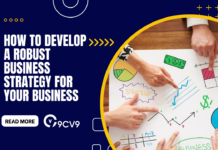
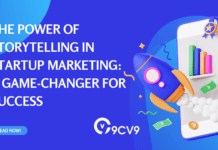





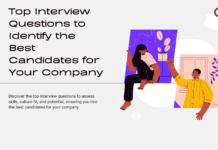
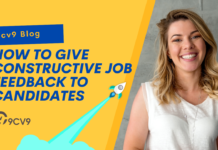

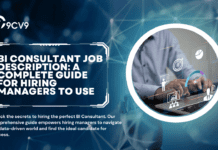





![Writing A Good CV [6 Tips To Improve Your CV] 6 Tips To Improve Your CV](https://blog.9cv9.com/wp-content/uploads/2020/06/2020-06-02-2-100x70.png)


